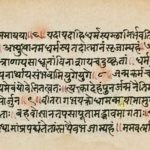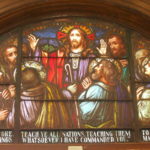The New Testament is often referred to as “The Christian Bible” or “The Christian Scriptures.” This is a bit of a misnomer because the vast majority of Bibles that Christians own contain both the Old and New Testaments. Since the time of Christ, Christians have benefited from and been enriched by the Hebrew Scriptures as well as the New Testament.
In fact, the Old Testament, or the Hebrew Scriptures, was the only Scripture for the first years of the early Church. The New Testament was in the process of being written and it was not until around 367 AD that the list of books was formalized and the canon was closed. The list of “approved” New Testament books, though, had been floating around since early in the second century.
The New Testament can be broken down into several sections.
The first four books are usually referred to as the “Gospels.” Each of these books, Matthew, Mark, Luke, and John is a presentation of the life of Christ. The Gospels appear to have been written to specific groups of Christians.
Mark is usually accepted to be the earliest of the four. John Mark was a close associate of Jesus’ disciples, especially Peter and Paul. Most scholars believe, and early Church tradition seems to bear out, that Mark’s Gospel is actually a compilation of Peter’s sermons about Jesus and his eye-witness recollections of Jesus’ ministry. Mark was likely written in Rome to the Christians there. This is where Peter spent his last days before being martyred for his faith.
Matthew and Luke’s Gospels
Both Matthew and Luke’s Gospels draw heavily from Mark’s work. They both add material of their own but clearly make use of a large portion of Mark’s account. Matthew’s Gospel is aimed at Jewish Christians, probably in Palestine. He focuses on presenting Jesus as the fulfillment to many Old Testament prophecies. He also seems to portray Jesus as a new Moses. While Mark is more concerned with what Jesus did, Matthew is more interested in presenting what Jesus said.
Luke is kind enough to provide the reader with a methodology for how he wrote his book. Luke refers to other early Christian writings and says, “They used as their source material the reports circulating among us from the early disciples and other eyewitnesses of what God has done in fulfillment of his promises. Having carefully investigated all of these accounts from the beginning, I have decided to write a careful summary for you.” He speaks of the reports and eye-witness accounts that were circulating among the Christians. Luke then said that he had carefully investigated these accounts as he wrote his book.
Luke’s Gospel is the longest and probably the most chronological. As stated, he incorporates Mark’s Gospel, but also adds a lot of original material, probably gleaned from interviewing witnesses. Luke’s work appears to have been aimed at a sophisticated Greek audience. The Greek that he wrote in is, by far, the most cultured of the New Testament.
Book of John
John’s Gospel is very different from the other three. It was probably written at least twenty years after the others, late in the first century. The Church Fathers believed that John wrote to supplement what had already been written about Jesus. John’s presentation of Jesus develops Christ’s character. John presents many long conversations that Jesus has with various individuals who were seeking to know the truth. John only provides seven miracles, but they are strategically chosen to reveal more of Christ’s divine nature.
John also articulated his reason for writing another account of Jesus’ life. “Jesus’ disciples saw Him do many other miraculous signs besides the ones recorded in this book. But these are written so that you may believe that Jesus is the Messiah, the Son of God and that by believing in him you will have life.” (John 20:30-31) John wanted his work to lead people to faith in Christ.
The next book in the Christian Scriptures is the Acts of the Apostles.
This book was originally a part of a two-volume set that included the Gospel of Luke. Luke is commonly accepted as the author of both books. Acts is a fast-moving and fascinating look at the first thirty years of the Church. It does this by focusing on the ministries of the two most eminent apostles, Peter and Paul. Acts provide a window into the early church and show how they worshipped, handled conflict, evangelized, developed leaders, planted churches, and turned the world upside down.
After Acts, the Apostle Paul’s thirteen letters are listed with the longest first to the shortest.
Most of his letters were written to churches that he had founded. The exceptions are Romans and Colossians. In each letter, Paul responds to questions from the particular church, addresses problems, and provides both doctrinal and lifestyle teaching. The letter to the Philippian church seems to have been written as a “Thank You” note for a financial gift that they had sent to Paul. 
Among Paul’s letters are also four letters that are written to individuals. He wrote two to Timothy and one to Titus. These were co-workers of Paul and he wrote to them to give them guidance in the tasks that he had assigned to them. Paul also wrote a fascinating little letter to a friend of his named Philemon. Paul wrote to Philemon to address a situation involving a runaway slave named Onesimus. Paul was in jail at the time but had somehow encountered Onesimus. He is sending him back to Philemon with the letter in hand. This short note by Paul is a brilliant example of Paul’s leadership style and the way that he viewed slavery.
After Paul’s letters, the group of writings called the General Letters comes next.
The authors include James, the brother of Jesus, Peter, John, and Jude, also the brother of Jesus. The letter to the Hebrews is anonymous and scholars have debated for years about who might have written it. Hebrews is actually more of a written sermon or teaching than it is a letter.
The Book of Revelation
The Revelation is the only example of apocalyptic literature that is in the New Testament. The Apostle John wrote this book while exiled on the island of Patmos. Revelation has been interpreted in many different ways through the centuries and probably will be until Christ returns. In its simplest form, however, Revelation portrays the cosmic battle that is taking place in the heavens and on the earth and shows God’s ultimate victory.
One of the often-overlooked aspects of Revelation is the centrality of the Church to God’s plan. Revelation opens with Jesus giving specific messages to seven churches in Asia. These churches could be said to represent the Church universal. Some of them draw Jesus’ praise while others draw his correction. Most of them receive a mixture of praise and correction.
The Christian Bible, like the rest of the Scriptures, has the power to have a lasting impact on those who will spend time reading and meditating in it. Paul said, “All Scripture is God-breathed and is useful for teaching, rebuking, correcting and training in righteousness, so that the man of God may be thoroughly equipped for every good work.” (2 Timothy 3:16-17)






